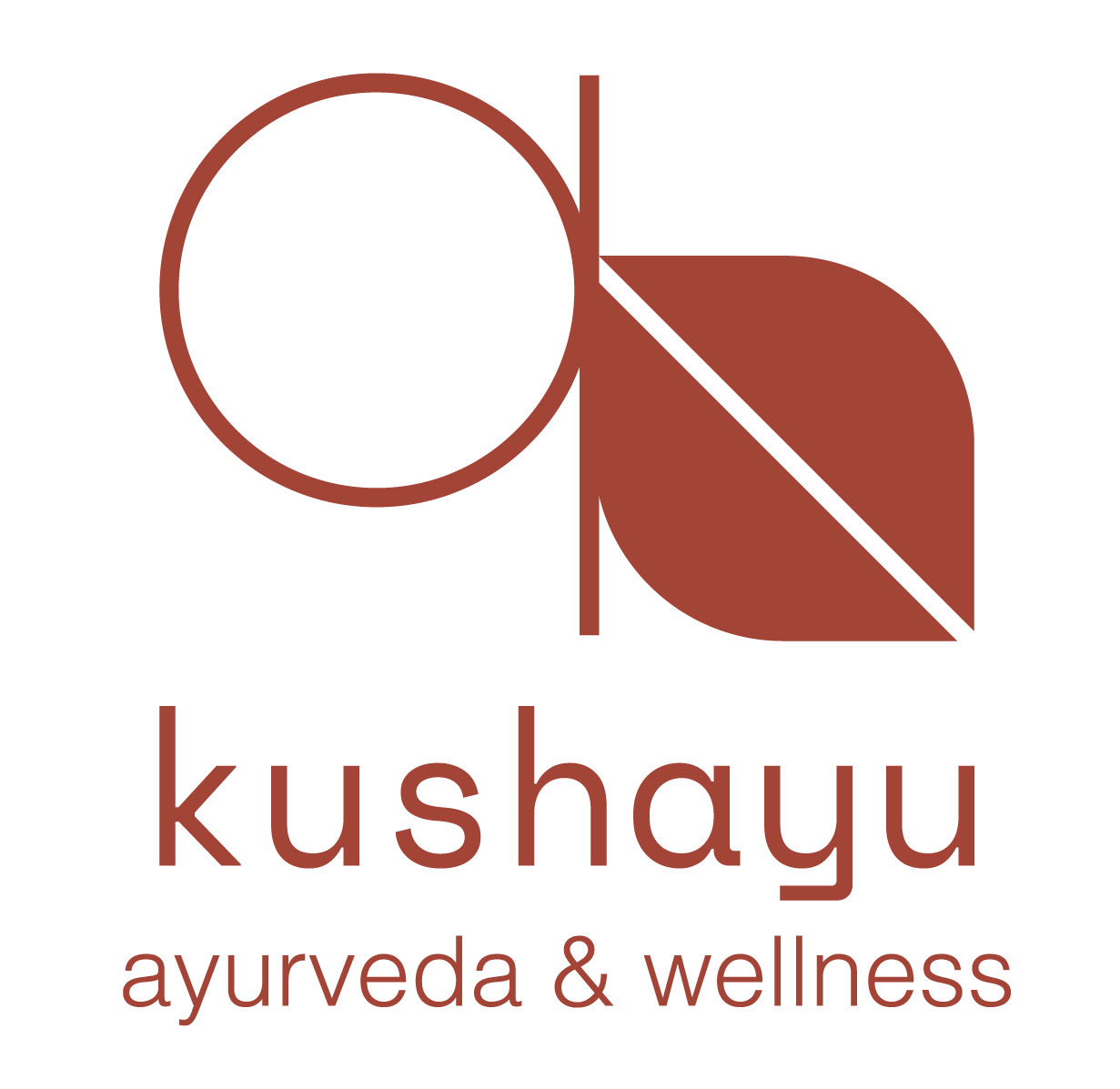“Vishamasanam agni vaishamya karaanam”
(Charaka Sutrasthan 25/40)
Intake of irregular meals causes irregularities in digestive power.
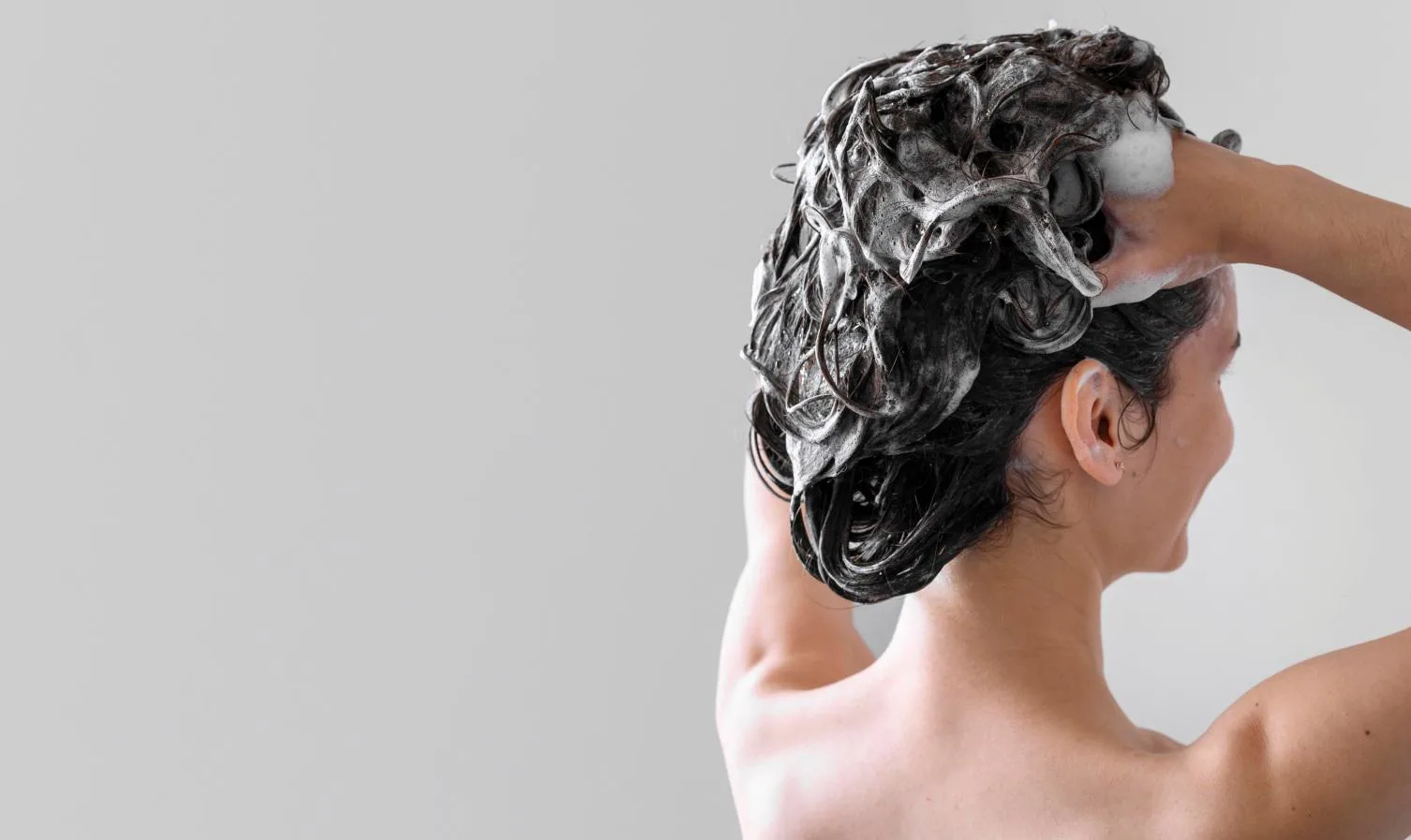
You might have heard hair care brands shouting from the housetops about their 'paraben-free' and 'sulfate-free' hair care products. And the buzz is of course for the right reasons. We all know that paraben and sulfate are bad for hair but still believe in the fact that more lather is equal to cleaner hair. However, it is time to break that stereotype!!!
According to Ayurveda, the health of every hair on your head reflects the health of your body as a whole—and both depend on good nutrition, a balanced lifestyle, and proper care. Beyond those factors, there are many other things that can dictate your hair’s look and feel, ranging from your dosha type (mind-body constitution) and age, to your hormonal fluctuations, stress, pollution, the weather, and the prescription medications you’re taking.
To maintain cleanliness of hair, ingredients with natural properties should be used. As a result, harm to the hair is prevented and it ensures good care of hair but nowadays unfortunately, many shampoos, conditioners, and hair-care products contain chemicals like sodium lauryl sulfate, DEA, and/or propylene glycol, which can damage your hair and strip its natural luster over time. Those are nothing but a heap of chemicals in a paste-like form, attracting the customer with its fragrance. How many of us know that the money we spend on buying such shampoos is akin to digging our own graves?
For hundreds of years, women have been using Hibiscus leaf paste, shikakai (Acacia concinna) and Reetha (Sapindus mukorossi) for washing hair. Mixture of powders of shikakai pods, amla and dried peels of oranges/lemon should be soaked in water overnight. Next day, this water should be rubbed into the hair. After half an hour, the hair should be washed with reetha water. For dry hair, apply oil to the hair every night and wash with shikakai and reetha the next day. If this is not possible, then wash the hair using mild herbal shampoos. While shopping for Ayurvedic herbal shampoos check the ingredients of the product. The following are some of the more common ingredients found in Ayurvedic shampoo:

Amla with excellent antioxidant, coolant properties and prevent greying, Shikakai which fights dandruff and a potent cleanser, Reetha with cleaning, antifungal, and antibacterial properties, Brahmi which improves blood circulation in scalp, Hibiscus which encourages hair growth and invigorate the scalp, Neem which treats dry and frizzy hair, Aloe vera with plenty of benefits as hair conditioner, strengthens hair follicles and moisturizes the scalp, Fenugreek, Citrus, Cinnamon and cloves etc… With many benefits of these ingredients there is no surprise that more people are switching to herbal shampoos.
But according to Ayurveda apart from this there are many important things you must take care.
Step 1:

Your hair and nails are the byproducts of your bone metabolism, so it can be helpful to follow a diet that nourishes your bone tissue. Ayurvedic vaidyas recommend cooked greens and bitter, leafy, green vegetables as especially good for hair, though as always, favour foods that taste good and are seasonally appropriate and balancing to your dominant dosha type. Incorporate some of these “hair food” superstars into your diet: fresh coconut, almonds, pumpkin seeds, and walnuts.
Step 2:
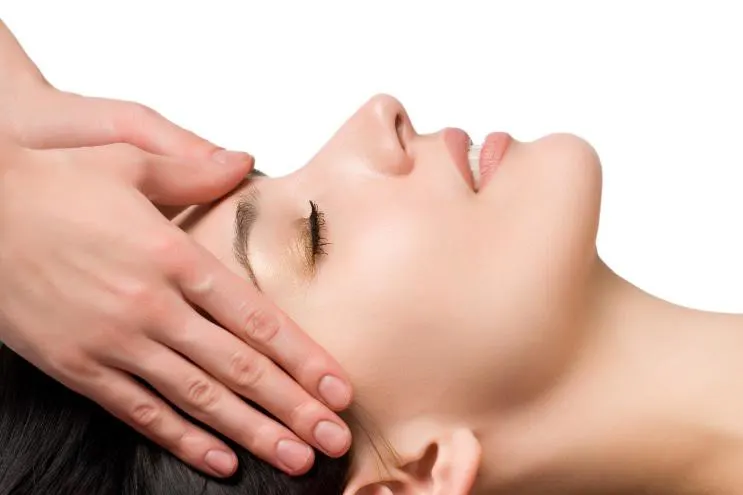
Massaging your scalp with warm oil stimulates and moisturizes your scalp, both of which can promote hair growth.
Step 3:
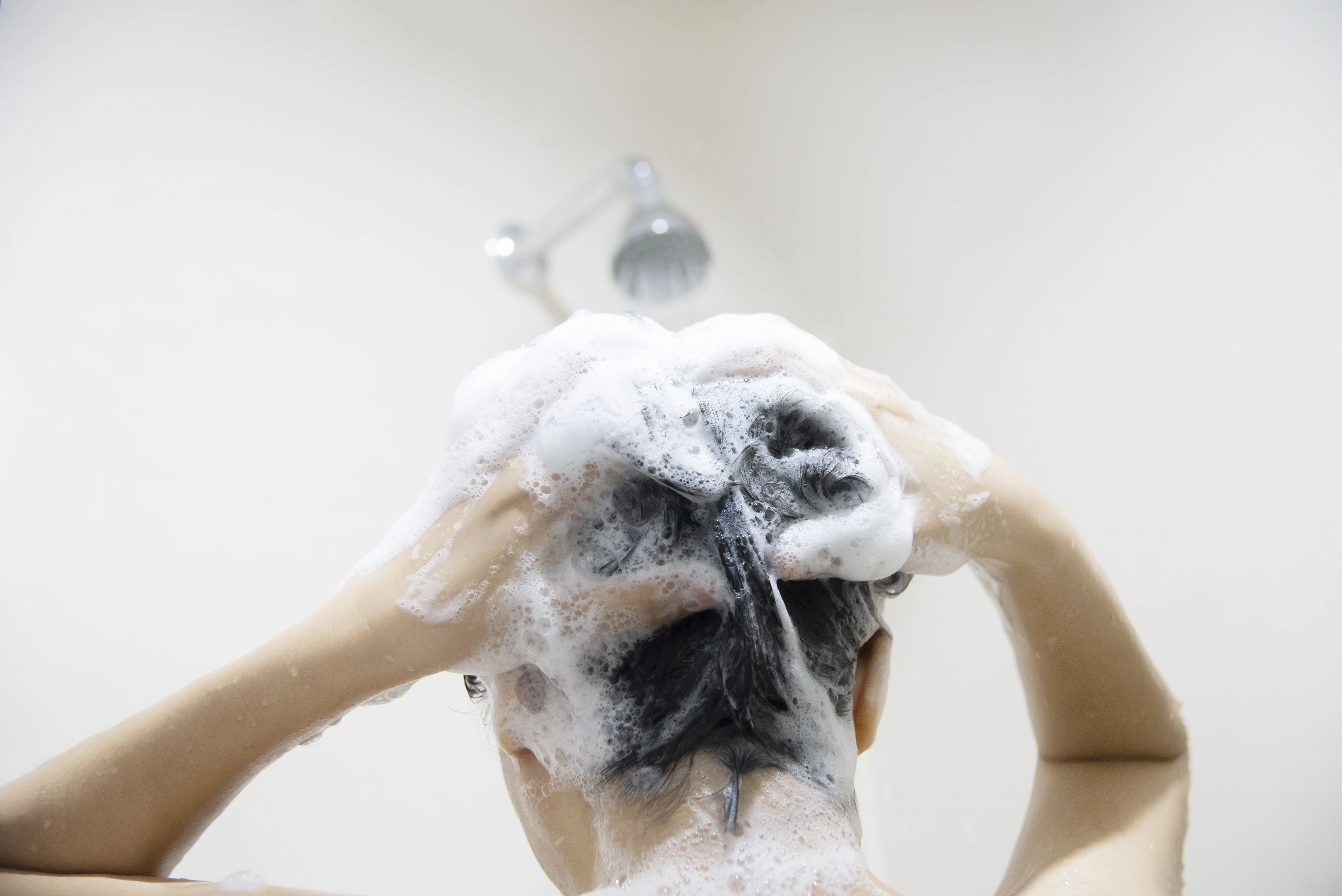
Avoid excessive shampooing - Ayurveda does not advocate excessive shampooing, especially with harsh shampoos. This can lead to drying out of the scalp, which damages hair.
Step 4:

Frequency of washing- Frequency of washing hair depends on the quality of your hair and scalp. Oily scalps need more frequent shampooing.
Step 5:
Avoid hot water- Both the brain and scalp prefer to be cool. So always use lukewarm water to shampoo your hair. Cool water helps in toning the scalp and refreshes the nervous system.
Step 6:
Go for natural conditioners- Always use a natural conditioner to condition your hair after a wash.
Step 7:
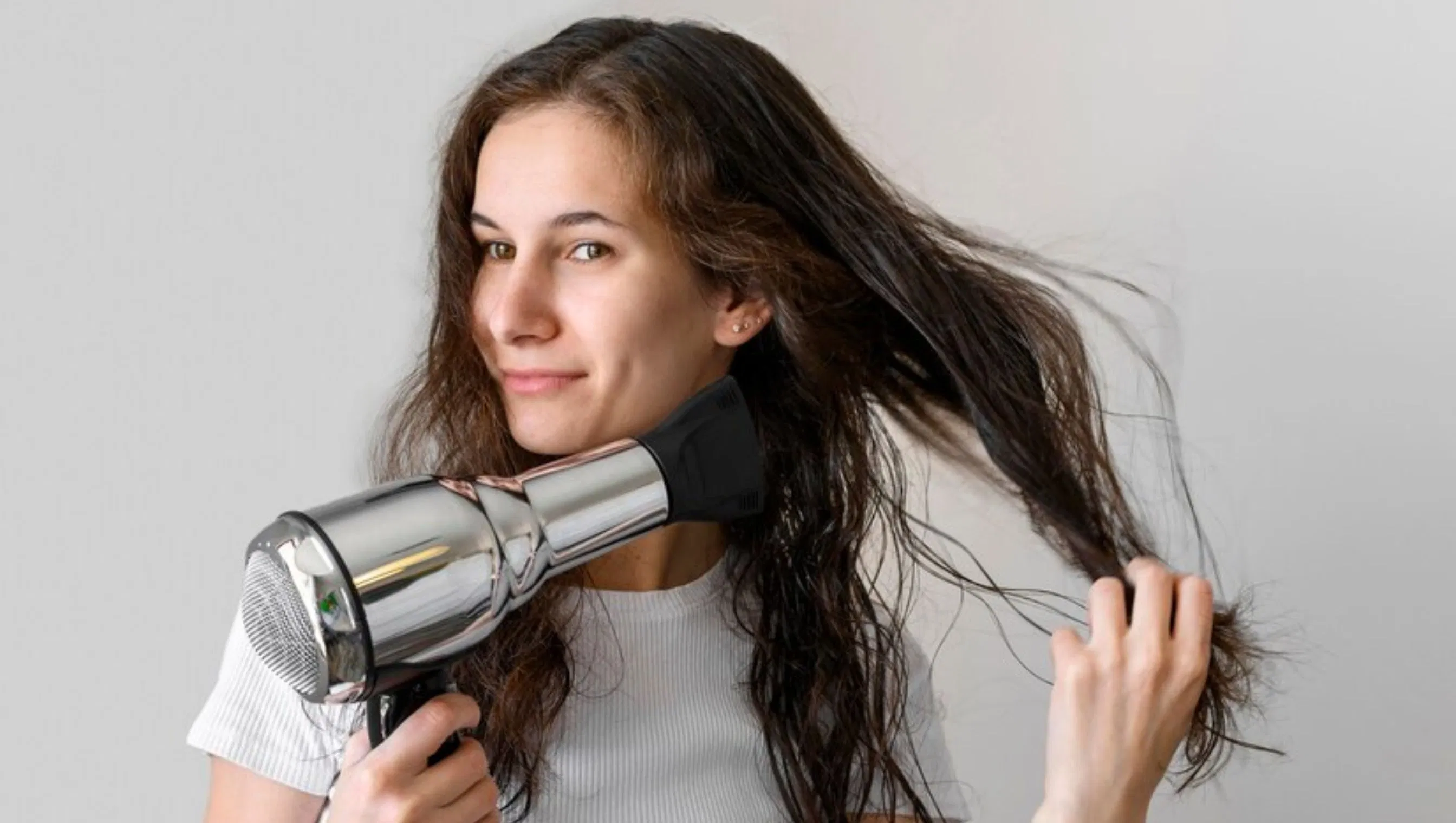
Avoid blow-drying- After washing, leave your hair to dry naturally. Do not blow-dry your hair as it dries hair and damages it.
Step 8:
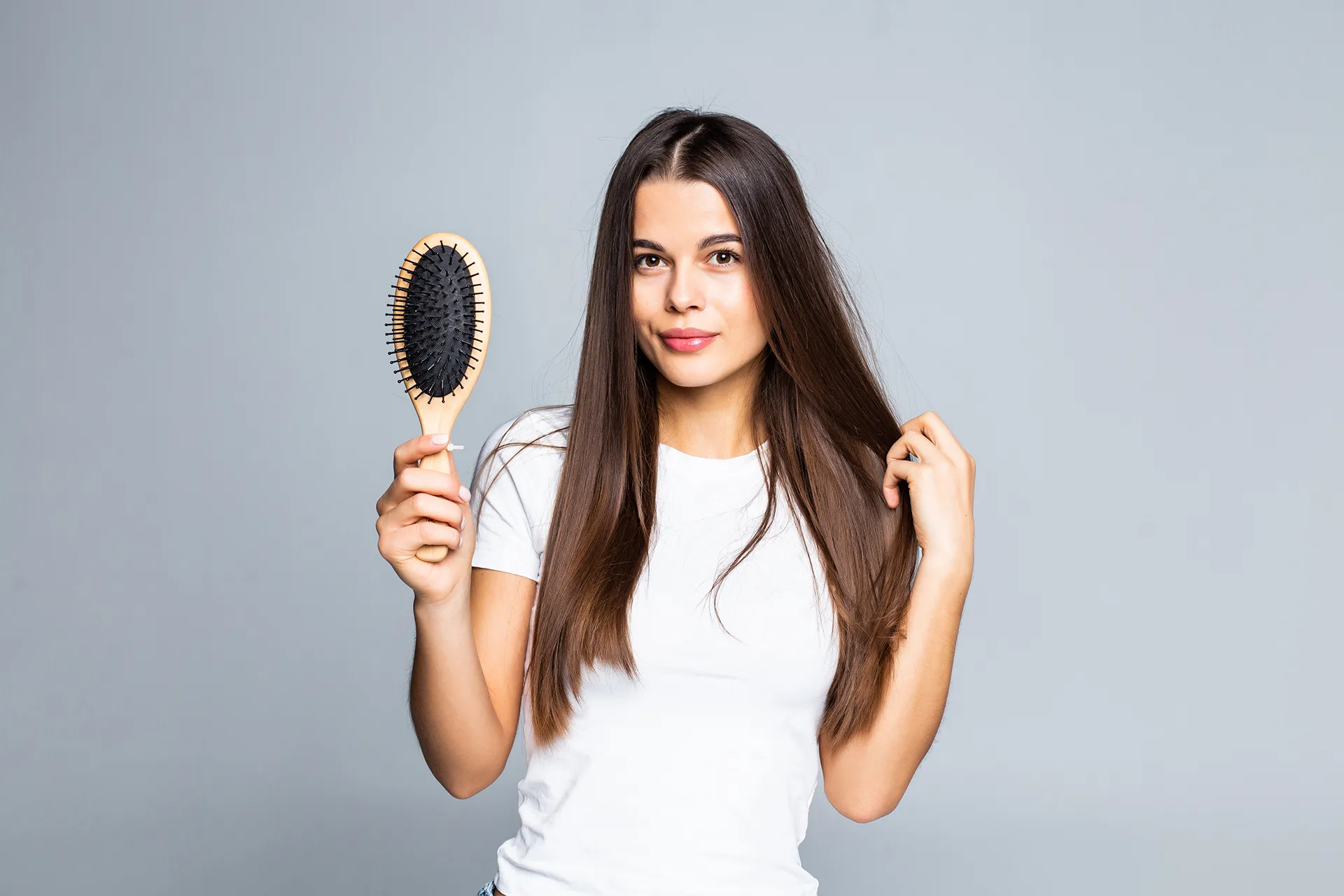
Brush your hair regularly- Brushing hair regularly gives the scalp a gentle massage and improves blood circulation. Wide-toothed wooden combs should be used for brushing. Also, when your hair is brushed, oil-producing glands in the scalp get stimulated and this coats the hair shaft with oil, giving it a natural sheen.
Excess stress can aggravate Prana Vata in the mind, which can disrupt the hair-building process and accelerate premature greying. Stay on top of stress levels with these easy Ayurvedic measures! Exercise regularly with Yoga Asanas (yoga postures) to help keep stress levels in check and to balance fat metabolism. Never underestimate the power of routine. Follow a daily Ayurvedic dinacharya (daily routine). Any stress reduction activities or techniques that you practice will be beneficial. For instance, the Transcendental Meditation technique provides deep rest, stress release, builds natural resistance to stress and has been shown to reverse the damage caused by stress.
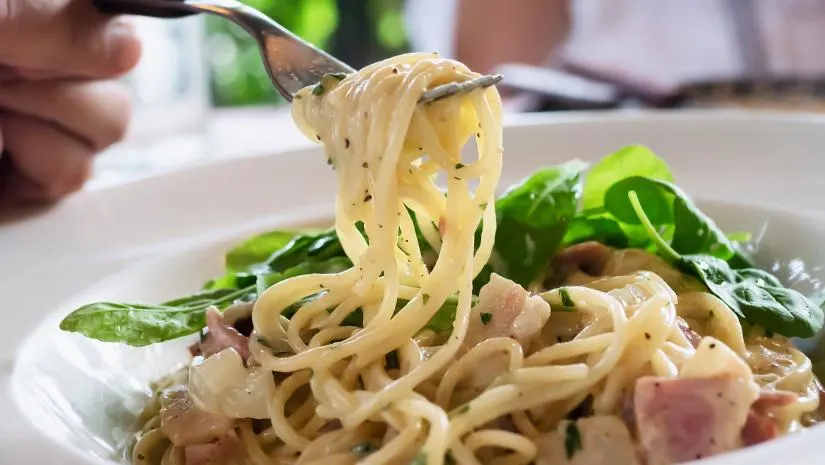
SOOTHING WINTER PASTA
Winter is pasta time! When it is cold outside, we tend to crave warm, comforting, satisfying meals that will help push away those winter blues. What better way to give ourselves plenty of energy than through delicious and nutritious winter pasta?
Ingredients
- 1 package spaghetti pasta
- 2 tablespoons unsalted butter
- 2 tablespoons olive oil
- 3 cloves garlic (minced)
- 5 boneless, skinless chicken pieces
- 1/2 teaspoon salt
- 1/8 teaspoon white pepper
- 1 cup heavy cream
- 1 package basil pesto (3 tablespoons set aside)
- 1/4 cup freshly squeezed lemon juice (1 tablespoon set aside)
- 1 teaspoon grated lemon zest
- 2 cups frozen baby peas
- 1/3 cup freshly grated Parmesan cheese
Preparation
Bring a large pot of salted water to a boil. Add pasta to boiling water. When pasta is done, drain well and keep warm.
Meanwhile, cook chicken. In a large saucepan, combine butter, oil, and garlic over medium-high heat. When garlic begins to sizzle, add chicken cubes, sprinkle with salt and pepper.
Stir over medium heat until chicken is almost cooked through, about 4 to 6 minutes. Stir in cream and bring to a simmer; reduce heat to low.
To the chicken mixture, add 3 tablespoons of the pesto, pour in 3 tablespoons lemon juice, the lemon zest, peas, and Parmesan cheese. Toss over medium heat until chicken is thoroughly cooked, and the mixture is hot.
Place the warm pasta in a serving bowl and top with chicken mixture. In a small bowl, combine the remaining 3 tablespoons pesto with the remaining 1 tablespoon lemon juice. Drizzle over the pasta and chicken and serve immediately.
